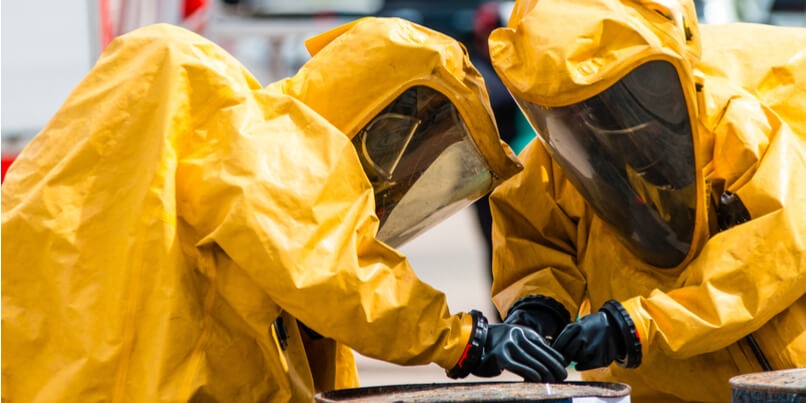 The risk of a deliberate or unintentional hazardous material or radiological release is an acute and all too real challenge for military and civil emergency response teams across the globe.
The risk of a deliberate or unintentional hazardous material or radiological release is an acute and all too real challenge for military and civil emergency response teams across the globe.
In most cases the responsibility for effective handling of such events lies in the hands of individual national, regional and local government agencies who must develop their own chemical warfare agent (CWA) training procedures in order to be able to effectively respond to any threat.
Rapid detection and response is critical, as is the ability for personnel to be able to accurately interpret and relay their findings.
With this in mind, increasing numbers of military agencies, civil response teams and CBRNe instructors are looking to innovative simulator training tools and strategies to assist with their teaching.
And with this is mind it can be useful to have consider a few key questions when deciding which CWA training system offers the best fit:
1) Is the CWA training system safe?
Human safety, environmental concerns, administrative burden and cost inevitably restrict or preclude the use of simulants or live sources in training exercises.
But by replacing the potentially harmful source with a harmless electronic substitute, it's possible to remove the risk of saturating a training area or of posing any potential Health and Safety hazard to personnel, infrastrcuture or the environment.
2) How realistic will the simulator equipment be?
Detectors are used to collect vital information that is used to make life-saving decisions, so having access to simulator equipment that replicates every feature of the real device is going to be crucial.
Knowing how to monitor cumulative dose, how to identify false positives, how to understand the effects of wind direction and temperature and how to recognize the depletion of sieve packs and batteries are all key elements of realistic and effective training.
3) Is the equipment usable in a range of environments?
CBRNe or HazMat incidents can occur in an unlimited range of settings, both indoors and outdoors and in any number of potential weather conditions. And ideally instructors will want to be able to control every element of the exercise
The ability to be able to quickly set up a scenario (and for all conditions of that scenario to remain as you leave them) can also impact on the success of a training exercise.
Repetition is well understood to be a key to effective learning, so the ease with which the equipment can be reset to enable scenarios to be repeated is another significant factor that can optimise the training experience for both students and their instructors.
4) Does it have AAR to assist post-exercise learning?
An important outcome of training with simulator detectors is that students are able to demonstrate their ability to set up and use the device in exactly the same way as they would the real instrument.
If any stage of the process isn't followed correctly, or isn't completed to a sufficient standard, then instructors will want to be able to obtain that information and report it back to the trainees, either during or after the exercise.
5) Will it be expensive to maintain the equipment?
A driving factor in the decision to purchase simulator technology is the fact that it prevents wear-and-tear or damage to real detectors during training exercises.
But equally it's important to establish that your simulator equipment won't require any expensive maintenance or recalibration that could render it 'out of action.'
It will also be crucial to establish that there's no requirement for the ongoing use of costly consumables which would increase the total cost of ownership.
6) Is the training system customizable ?
With the increasing number of new CBRN threats it's even more important that simulator technology can implement a wide range of technologies (ultrasound, electromagnetics, fluorescence, virtual modelling etc) in order to simulate a diversity of sources.
The ability for simulator detectors to be able to be used with actual devices is another key factor, as could be the capacity for the simulators to be able to interface with third party Instrumented Training Systems.
There's no doubt that an investment in electronic simulators warrants serious consideration, however if the right questions are asked then CBRNe instructors can be reassured that the decision will lead to tangible and calculable CWA training outcomes.





